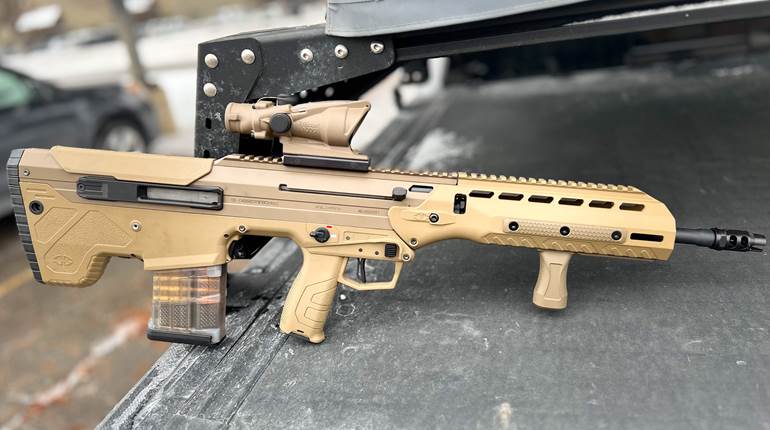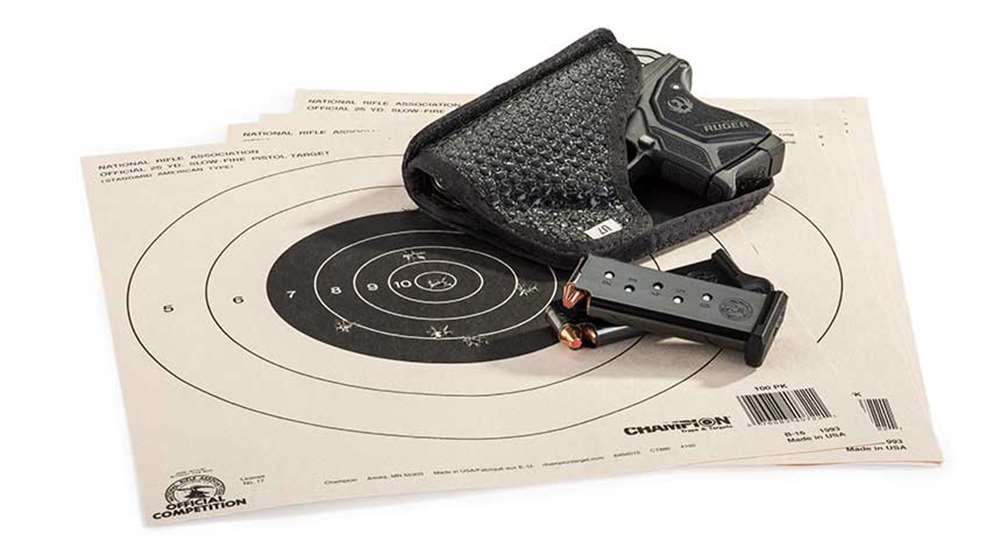
Establishing a bond with a pocket pistol is similar to marriage in a way: You have to be willing to accept compromise. To make any compromise worth the effort, there must be a clear objective. In this case preserving your life is the goal, and pocket pistols, whether diminutive semi-automatics or small-frame revolvers, do their part and offer a solution that is easy to carry concealed.
Merely slipping one into the front pocket of your jacket, however, will not prevent a determined threat from causing you bodily harm. To stop a violent attack, you must be prepared to counter with force adequate to end the confrontation. Therein lies the compromise.
In exchange for realizing the benefits of a pocket pistol’s small size, light weight and ease of concealment, you trade accuracy, capacity, ease of handling and power. So while a pocket pistol may be the most convenient tool to have at hand, it is often far from ideal. The first step in dealing with its limitations is realizing it will likely be more difficult to defend yourself with a pocket pistol than with any other firearm.
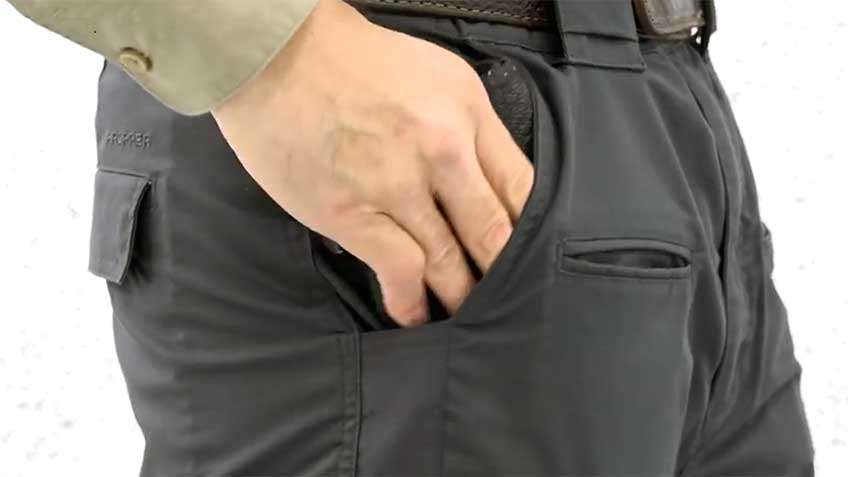
Unfortunately, many citizens who carry pocket pistols are lulled into a false sense of security and don’t recognize and plan for the relative deficiencies of their little handguns. That is particularly true of those who carry a pocket pistol as a backup to their primary sidearm.
True, many pocket pistols are simple to fire because their double-action-only triggers or striker-type mechanisms eliminate the need to disengage a frame-mounted safety. It’s also true that most defensive engagements take place at short range. But to assume these factors warrant a nonchalant attitude is foolish, and potentially deadly.
Once you realize a pocket pistol represents a compromise that in many cases is necessary to accept if you want immediate access to a handgun, the next step is learning how to deal with the trade-offs. The process includes identifying the areas where pocket pistols come up short, and then tailoring your self-defense plan with those limitations in mind.
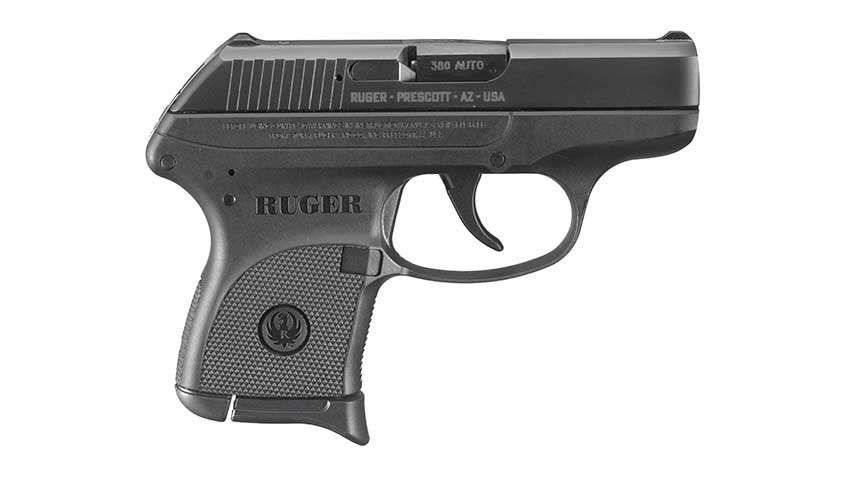
When considering the best way to cope with each downside, don’t be afraid to seek professional help. My Ruger LCP and I went to Gunsite Academy in Paulden, Ariz., where we found instructors willing to assist in ironing out our issues.
We soon realized we weren’t alone. About a dozen other shooter/pistol couples were there with the same issues as us. Here is what we learned during our two days of shooting.
Lesson One: Think Before You Carry
In any good compromise, both parties gain something. Because of their size, pocket pistols give you more flexibility than larger handguns in how and where you choose to carry them.
“I carry a pocket pistol because it’s less visible and less cumbersome,” says Gunsite Rangemaster Charlie McNeese. “I usually carry it as a backup to my primary pistol, but if I don’t have the ability to carry a big, primary 5" or 4" .45-cal. or .40-cal. because of its visibility, I may go with a .38-cal. revolver or a .380 ACP pistol instead. At that point, the smaller gun becomes my primary pistol.”
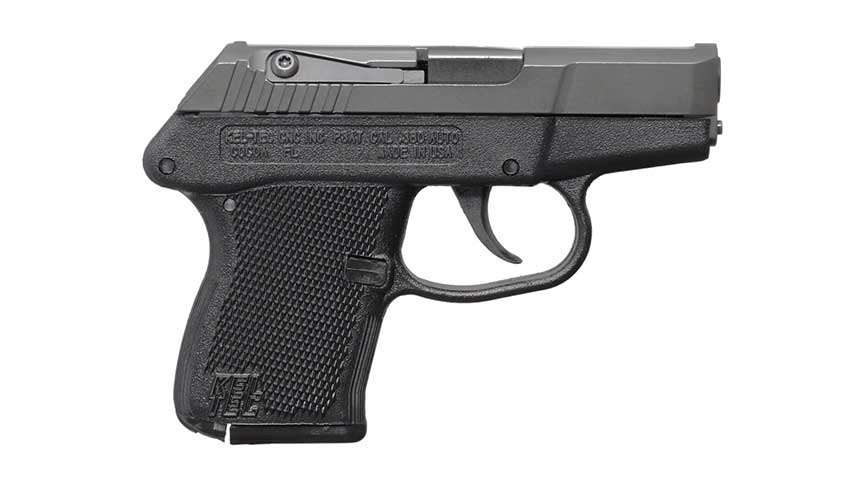
Deciding whether you rely on a pocket pistol as your primary sidearm or as a backup could dictate where you carry it, McNeese suggests. For example, if you carry only a Kel-Tec P3AT during the warmer months because the heat calls for a lighter covering garment, the best place for it may be inside the waistband behind your strong-side hip—where you normally tuck your go-to compact. You’re already familiar with the carry location, so why change it? Familiarity breeds competence.
When serving in the backup role, your pocket pistol’s carry location becomes secondary to that of your primary handgun, but careful thought is still required in determining placement. The moment you reach for your backup, it becomes your primary.
Presenting your pocket pistol from an unconventional position, such as lying on your back, or even with your support hand are scenarios to consider when choosing a backup carry location. Ankle, appendix and support-side, inside-the-waistband carry are all options.
“You want to make sure what you need to get a hold of is accessible,” says McNeese, “and you can do it safely.” Of course, a pocket can serve perfectly as a carry location, and it’s probably the most common place for a pocket pistol to reside. Depending on your activities, however, a pocket—particularly one in the front of your pants—may not be ideal, despite the popular moniker.
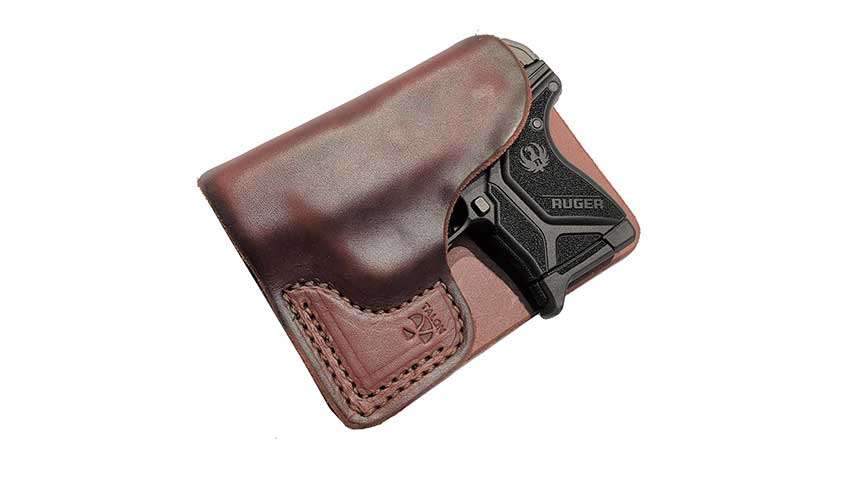
“What do you do if you’re sitting down?” McNeese asks. “How do you get it out of your pocket?” The answer is you don’t, at least not without quite a bit of movement. If you have to stand just to get your hand on your pistol, you’ve given a threat several critical moments to anticipate and perhaps avoid your defensive actions.
A jacket pocket is easier to access from a seated position, but like any pocket, its size relative to your hand and your pistol plays an important role in its utility as a carry location. When your hand wraps around the frame of a pistol, it forms a semi-fist shape that is nowhere near as streamlined as an open palm.
You may have no trouble shoving your hand in a pocket and accessing the pistol, but your line of defense is worthless when you can’t put it into action. While it’s possible to fire a pistol from inside your pocket, that drastically limits your effective range and is best reserved as a last-ditch effort.
No matter where you choose to carry your pocket pistol, put it in a holster. That requirement seems obvious for methods such as inside-the-waistband and ankle carry, but it’s just as necessary if you carry a pistol in your pocket.
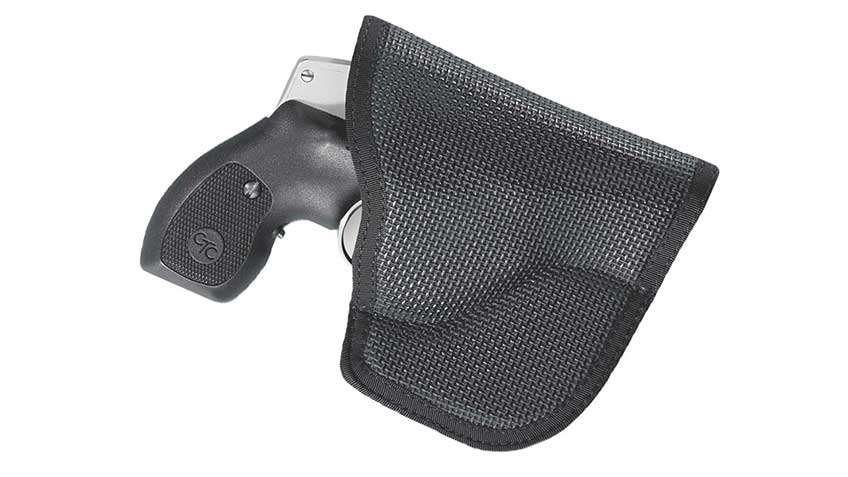
A holster protects critical components of the pistol from foreign objects, such as lint or a forgotten coin, prevents your index finger from accidentally contacting the trigger, and keeps the handgun oriented in the optimal position for presentation.
Lesson Two: Practice Effective Presentation
Pocket pistols often require a more determined focus on handling than larger handguns to safely and effectively present them from concealment. Simply put, they aren’t as easy to grab.
“Everything is more difficult with a small pistol,” says Gunsite Rangemaster Chris Weare. “You may find you’re going to have to slow down and be more deliberate.”
Weare stresses that the maxim “slow is smooth and smooth is fast” should be the guide when presenting a pocket pistol. Frantic motions, which come all too easily in a stressful situation, lead to mistakes. Pocket pistols tend to magnify those mistakes by being small.

For example, it’s more difficult to establish a proper firing grip on a tiny frame that seems to get swallowed by your hand. Taking a momentary pause to ensure your hand is in the proper position on the pistol before drawing it from the holster will help the next steps of presentation come more smoothly.
The alternative, adjusting your grip as you drive the pistol toward the target, can slow down your presentation by a greater degree than taking a split second to make sure your hand placement is correct at the start.
You probably will not be able to get your entire hand on your pocket pistol; your little finger and maybe even part of your ring finger may hang below the magazine. Weare points out this makes correctly indexing the web of your shooting hand on the frame or grip even more critical, as it serves as your initial and primary connection to the handgun. Placing your hand as high as possible on the frame or grip maximizes the amount of available space for your fingers, as well as helps control recoil.
A word of caution here: It’s possible to grab some small semi-automatics too high, and your hand will interfere with the slide cycle. Repeatedly performing a slow, step-by-step presentation during practice will help you recognize proper hand position by feel. You may have to spend more time perfecting this step with a pocket pistol than with a larger handgun. It’s worth the effort.
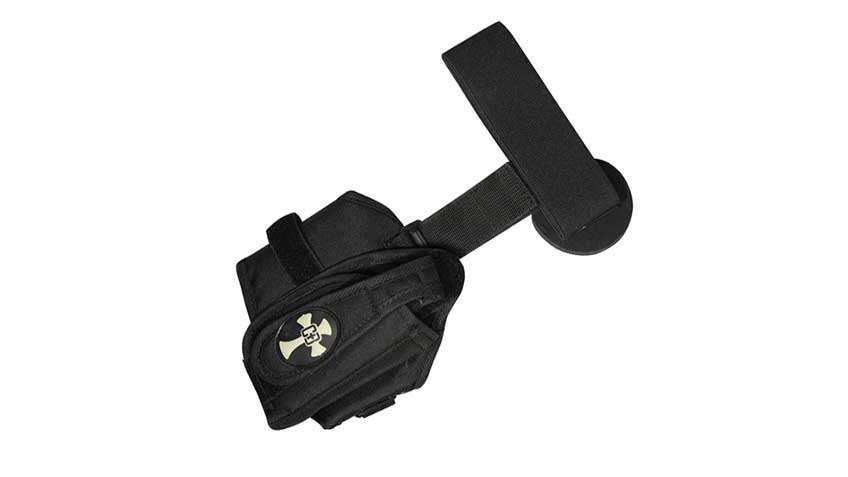
In order to get your hand on the pistol, you will have to clear a covering garment, pocket, waist pack or purse. Here again, a pocket pistol’s small size can cause complications, because it can become “lost” under a heavy coat or in a pouch. Weare’s recommendation to be deliberate especially applies to getting the things that conceal the handgun out of the way.
Use enough force to provide plenty of clearance for your shooting hand to access the firearm. You already have less gun to grab, so make sure you can get all of it. Depending on where you carry your pocket pistol, it may require more motion or effort to make it accessible than with a larger handgun carried in a conventional belt holster. Be aware that presentation could take more time with a pocket pistol, and plan accordingly.
Weare stresses you should never mix keys, coins, extra magazines or other items in the same pocket with your handgun as they can interfere with presentation at best or make it impossible at worst. In a stressful situation you could even mistake your cell phone for your pistol if it’s in the same pocket.
Always use your support hand to clear a covering garment or open a zipper. If you’re carrying in an ankle holster, trapping your pant leg between both hands will prevent it from binding as you pull upward. Once access to the handgun is clear, it’s important to keep your support hand and arm stationary, positioned behind or beside the firearm, as you withdraw it from the holster.
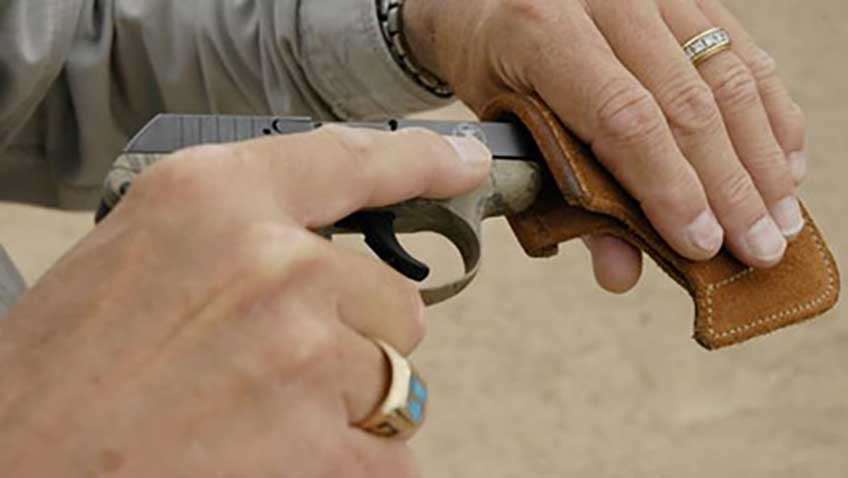
“These guns have short barrels, and if you’re not careful, you can accidentally cover yourself with the muzzle,” cautions Weare.
The same also applies to re-holstering. Never let your hand or other body part pass in front of the muzzle when placing the firearm back into the holster. While that seems easy enough to accomplish, it requires special emphasis when using a pocket holster.
McNeese says to avoid trying to re-holster a handgun with the holster remaining in your pocket. The holster can shift, and you can end up pointing the firearm at your body. Removing the holster so you can work with it in front of your chest, with the muzzle of the handgun constantly pointing downrange, is the best method.
McNeese recommends to first transfer the handgun from your shooting hand to your support hand. Reach into your pocket with your shooting hand and withdraw the holster. Stage it on a nearby surface or hook it somewhere on your clothing where it is easy to reach. Return the firearm to your shooting hand.
Finally, carefully use your support hand to bring the holster to the gun while keeping your fingers above or below the muzzle, which should remain parallel to the ground and pointed downrange. It’s as complicated and awkward as it sounds. Accept the compromise and proceed slowly.
Lesson Three: Deal With The Faults
The physical attributes that make pocket pistols so attractive for concealed carry also limit our ability to use them effectively for self-defense. First, there’s the problem with accuracy. Pocket pistols have short barrels. Short barrels have short sight radiuses. Short sight radiuses make precise aiming difficult.
It doesn’t end there. Combine a short sight radius with small sights that can be tough to discern even in broad daylight, and you’ve arrived at the perfect recipe for misalignment.

“You have a very small gun with a very short barrel. There is very little margin for error,” says Weare. Even if you manage to align the sights perfectly and keep your entire focus on that little bump near the muzzle, you can still miss. You have to maintain the handgun’s ideal relationship to the target throughout the trigger press, without introducing movement that can cause it to shift.
The typically long, heavy, double-action trigger pull common to pocket pistols can make this seem impossible. Resist the urge to quickly power through the pull, and instead apply steadily increasing pressure to the trigger for what Gunsite calls the compressed surprise break. If you can have patience for your pocket pistol in just one area, this is it.
There is no secret to shooting pocket pistols accurately. “For a lot of people, a pocket pistol is only going to be effective to 5 or 7 yards,” he observes. “If you practice a lot with it, you may be able to get out to maybe 15 yards or 25. When you get to 25 yards, you’re really going to have to put a lot of stress on the sights and the trigger press. At that range, you are going to be challenged.”
The lower downrange performance levels of pocket pistol cartridges make shot placement on a threat more critical. A 90-grain, .380 ACP or 125-grain, .38 Spl. load from a pocket pistol produces roughly half the muzzle energy of a 180-grain, .40 S&W or 230-grain, .45 ACP load from a full-size handgun.
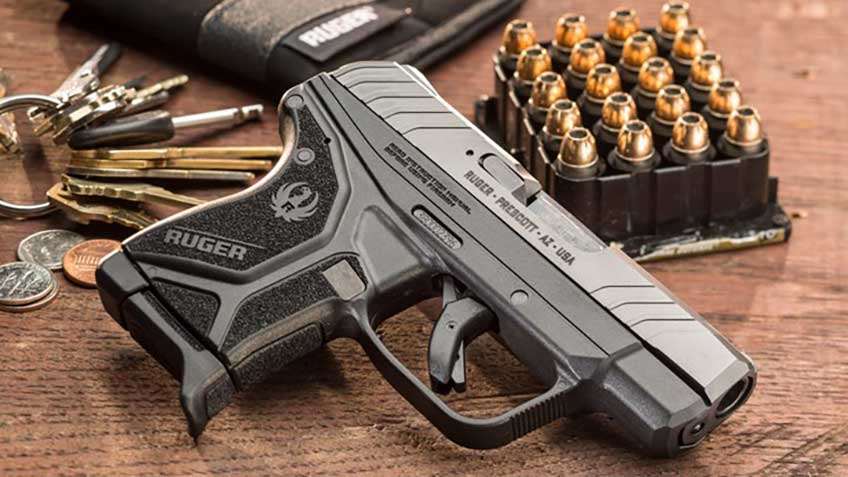
Modern bullet designs make the most of every foot-pound, but the stopping power of a pocket pistol cartridge is still significantly lower. Hitting the vital areas of a deadly threat is a must when employing a pocket pistol. Even then, says Weare, it may require several rounds to stop an attacker.
“Hit ’em where it counts, as many times as it takes,” he stresses. “There’s no substitute for shot placement, especially with a pocket gun.” Remember, however, most pocket pistols have a reduced capacity of five to seven rounds. A few misses and a couple marginal hits, and you could suddenly be faced with an empty gun while still fighting for your life. Carrying a reload, whether it be an extra magazine or a speedloader, is almost as important as carrying the gun itself.
Lesson Four: Take Time Together
Finally, make it a priority to spend quality time with your pocket pistol at the range or in repeated dry-fire practice at home. This is the chance to work out your differences. Here’s some valuable advice gained through experience: You’re the one who will have to change, and the sooner you do, the better off you’ll be.
Take presentation, for instance. The night a criminal knocks you to the ground and pulls a knife isn’t the time to discover that you can’t reach your pocket pistol when you’re lying on your back.
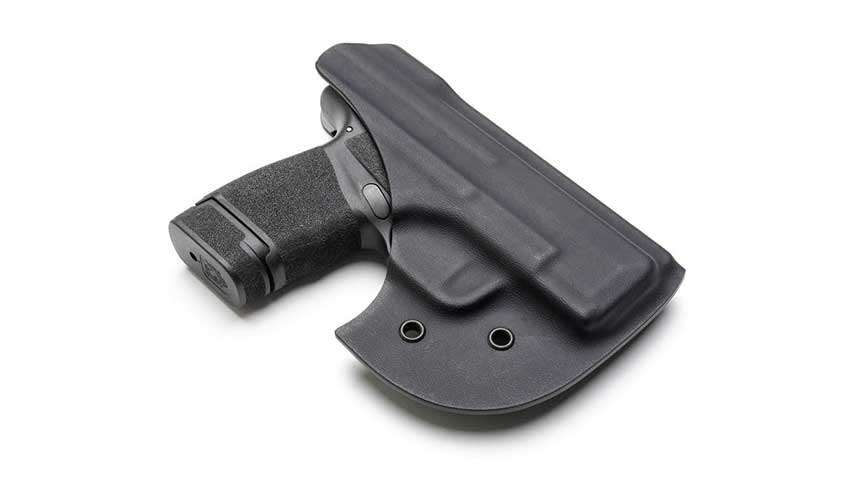
Some challenges to using a pocket pistol, like trigger manipulation, will become easier to deal with the more you practice. While you may think of your pocket pistol as a backup, both McNeese and Weare recommend practicing with it as often as you would with any other handgun—if not more.
Becoming complacent with your pocket pistol is a good way to make mistakes and develop bad habits, so focus on each step of the presentation sequence and every fundamental of marksmanship. Don’t assume just because you’re effective with a full-size handgun at 25 yards, it will be a cinch to get good hits with a pocket pistol at 5 yards.
Pocket pistols have a lot to offer, but they require a lot of attention in return. The more time you spend with your pocket pistol, the more intimate you’ll become with its strengths and overcome its shortcomings.





























